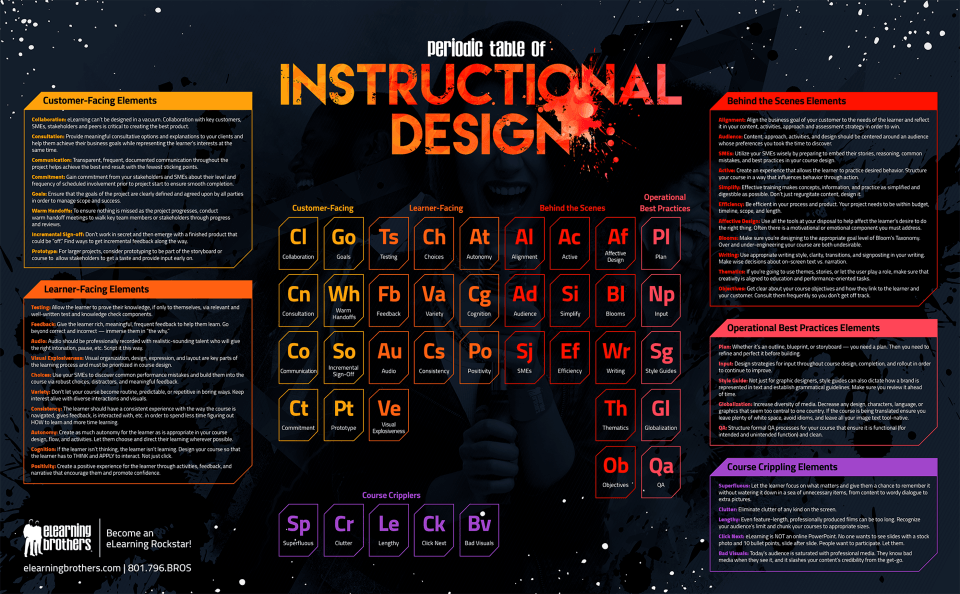The Periodic Table of Instructional Design Infographic
Students and scholars of chemistry make frequent use of the periodic table of the elements in order to contextualize and organize their understanding of the many substances they work with, as well as help to memorize each of their different properties. Seeing the tremendous boon that the periodic table is to the field of chemistry and science as a whole, folks at eLearning Brothers thought that instructional design could use a quick reference of its own. To that end, they have compiled a table of elements specifically for the instructional designers. Each “element” is organized into one of five different groups according to its properties and where it falls in the instructional design process.
Customer-Facing
The first group of elements that instructional designers should be familiar with are those dealing with customers and clients. Without a client, what is a business? The client dictates the entire mission and direction of the company. Even non-profits have people or entities that benefit from their actions. So each business, including eLearning, should be aware of their customers and clients.
Instructional designers have a uniquely intimate relationship with their customers, especially when it comes to custom courses, because the customer might have very specific requirements for their learners.
Learner-Facing
On the other hand, what is eLearning without learners? Many elements of instructional design pertain to the end user experience. How intuitive are the navigation and controls? How do learners submit their answers? Is there adequate feedback? All of these and more should be considered in the design process.
Behind the Scenes
A lot of what happens in multimedia projects occurs behind the scenes. It’s a bunch of decisions, some big, some little, that go unseen by the learner but nevertheless effect the overall look and feel of the course. When you go to see a play in a theatre, you probably don’t see the techies building and painting the set, or the actors getting their costume and makeup done, but these are huge parts of what goes into a play. Likewise, there are considerations to make behind the scenes of instructional design: Who is my audience? How can I make the objectives of the course clear? Does the design and layout of the course make sense? etc.
Operational Best Practices
These elements are the backbone of an organized workflow, and considerations for every instructional designer to make before starting a project. Things like blueprints, style guides, global markets, and more.
Course Cripplers
Much like the Lanthanide and Actinide series of elements, these are the elements that should be avoided at all cost if you don’t want your course to suffer serious consequences. Are your visuals up to par? Did you include superfluous material that acts as dead weight to the course? Know what it takes to keep your course unharmed by these hazardous elements.
- Download your copy of the infographic: PNG (Large) | PNG (Small) | PDF
- Play with our interactive Storyline version of the periodic table here.







You can adjust your cookie preferences here.